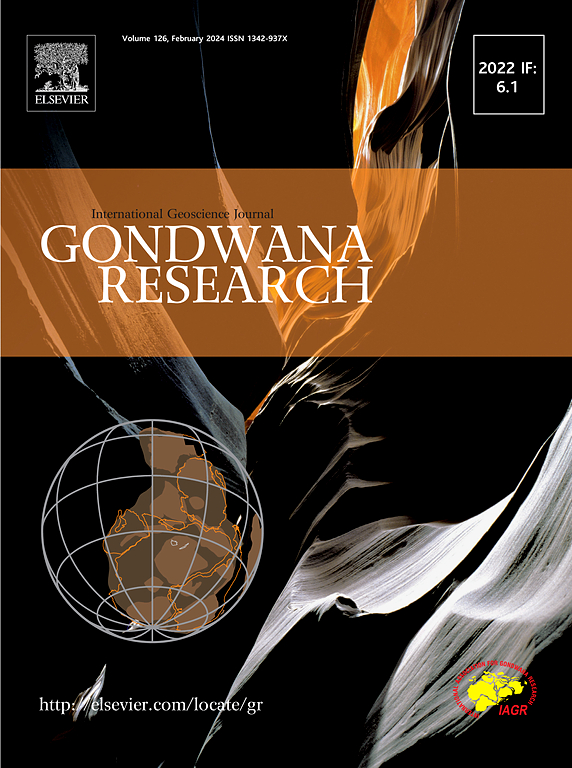Long-term fluctuation of Earth’s surface heat flux by the supercontinent cycle
IF 7.2
1区 地球科学
Q1 GEOSCIENCES, MULTIDISCIPLINARY
引用次数: 0
Abstract
The heat released from the Earth’s interior to the surface has a significant impact on the future of our planet. Owing to the secular cooling of Earth, surface heat flux has gradually decreased throughout Earth’s history. The average surface heat flux would be subject to fluctuations in accordance with the supercontinent cycle on the order of 100 million years because the average age of the oceanic plate changes with time. Based on the half-space cooling model, a decrease in average plate age was associated with a decrease in bathymetry and an increase in average surface heat flux. However, the relationship between surface heat flux and bathymetry on Earth is not straightforward. A conceptual model proposed that the asymptotic bathymetry resulting from the plate flattening effect of oceanic plates is important for recovering sea level fluctuations that are comparable to those of the past Earth. The purpose of this study was to investigate temporal changes in long-term surface heat flux during the supercontinental cycle using a conceptual model. The results demonstrate that surface heat flux fluctuated between −10 % and +25 % during the supercontinent cycle, compared to surface heat flux at the time of supercontinental formation. In contrast, the parameterized convection theory for Earth’s thermal budget suggests that the rate of secular cooling due to decay of radioactive elements was reduced by approximately 15 % over the same period. These results imply that the effect of the supercontinental cycle on surface heat flux is comparable to or larger than secular cooling of the Earth.

求助全文
约1分钟内获得全文
求助全文
来源期刊

Gondwana Research
地学-地球科学综合
CiteScore
12.90
自引率
6.60%
发文量
298
审稿时长
65 days
期刊介绍:
Gondwana Research (GR) is an International Journal aimed to promote high quality research publications on all topics related to solid Earth, particularly with reference to the origin and evolution of continents, continental assemblies and their resources. GR is an "all earth science" journal with no restrictions on geological time, terrane or theme and covers a wide spectrum of topics in geosciences such as geology, geomorphology, palaeontology, structure, petrology, geochemistry, stable isotopes, geochronology, economic geology, exploration geology, engineering geology, geophysics, and environmental geology among other themes, and provides an appropriate forum to integrate studies from different disciplines and different terrains. In addition to regular articles and thematic issues, the journal invites high profile state-of-the-art reviews on thrust area topics for its column, ''GR FOCUS''. Focus articles include short biographies and photographs of the authors. Short articles (within ten printed pages) for rapid publication reporting important discoveries or innovative models of global interest will be considered under the category ''GR LETTERS''.
 求助内容:
求助内容: 应助结果提醒方式:
应助结果提醒方式:


